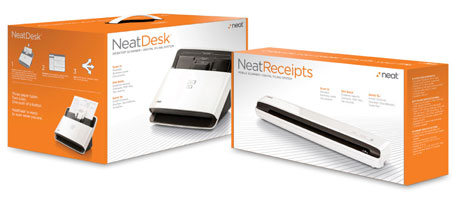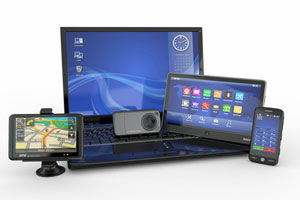Your Paperless Business
This page may contain links to Amazon.com or other sites from which I may receive commission on purchases you make after clicking on such links. Read my full Disclosure Policy

Today I’m thrilled to introduce a special guest, Lelah Baker-Rabe, who is one of our Professional Organizers Blog Carnival Star Bloggers. Lelah specializes in helping clients eliminate paper from their offices, and is here today to explain how you can benefit from making your organizing business paperless.

As professional organizers, we work with many clients who are challenged by paper. The daily inflow of paper is constant and our expertise helps our clients manage paper effectively. As business owners, we also have paper challenges. Because we have paper-management skills, the paper might not be as overwhelming for us, but it must be managed well in order for us to run our businesses profitably. With recent tech products like smartphones, tablets and net books, professional organizers have excellent resources and excellent reasons to take their businesses paperless.
What does it mean to have a paperless business? Invoicing and contracts would be sent and received electronically. Advertising and marketing materials would be electronic, too, forgoing a paper newsletter or direct mail campaign for an enewsletter or email campaign. When you do receive a piece of paper that you want to keep or a business card you want to refer to, you would employ a scanning system and then recycle the paper rather than storing it in a filing cabinet. Your calendar, address book and notebook might be available through web-based applications you can access on a smartphone, or you might use something like Apple’s MobileMe to keep your data updated across multiple electronic platforms, such as an iPhone and laptop. One always has to keep some physical records for legal and tax reasons, but they can be limited to a small permanent file.
Why go to all the trouble to retool your professional organizing business as a paperless one?
- Mobility. You can be anywhere and access important data, making it more efficient to schedule and follow up with clients and manage your workflow. You can also share data with employees or contractors more easily.
- It saves money and space. Your office space will be lighter without a lot of paper files; having all your data backed up to an external hard drive or a cloud-based backup system takes up very little room. While you might invest in new technology like a scanner or smartphone, you’ll save money on supplies like printer ink and paper.
- It helps you learn new skills you can transfer to your clients. A paperless business teaches tech skills that will help you work with clients on time management, office organizing and productivity.
- It sets an example for your clients and can be environmentally responsible, too. Recycling is good, but not using paper in the first place is better. However, tools like phones and computers can have large eco-footprints, so if you strive for a green business, do your homework before you invest in products.
Your organized business can also be your paperless business!
Running an organized business includes taking care of your website. My Website Care Plans include secure daily backups and routine updates, so you can focus on your clients, knowing your site is in good hands.




Interesting blog. I think you hit most of the important paperless options to move towards a paperless office. Your take that paperless can be a better organizational method is refreshing to read, as I think most people tend to view paperless options as a purely cost savings exercise.
Really? Maybe it’s just my organizing background, but I think of going paperless first as a way of reducing clutter, and secondly as an environmental move. I’d never really thought of the cost savings aspect.
I agree, Janet, from our perspective the main benefit of going paperless is to reduce that ever-present paper clutter. Many businesses, law firms for instance, do make the transition to paperless as a way to save money as well.
I once did a consultation in a medical office where one doctor had a paperless system and the other did not, and it was a real eye-opener to see how much space was needed for all the patient files – not to mention the time required to maintain the filing system!